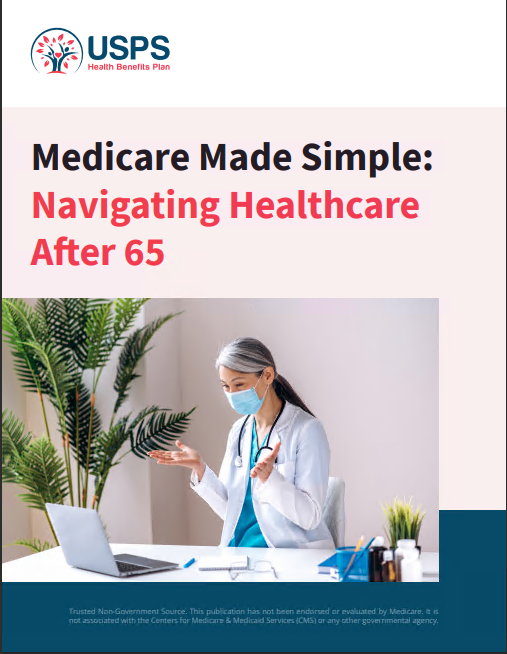Key Takeaways
-
The Federal Employees Health Benefits (FEHB) Program is no longer the default for USPS workers and retirees as of 2025. The new Postal Service Health Benefits (PSHB) Program now governs your coverage.
-
Whether you are a current employee or retiree, staying on top of enrollment timelines, Medicare requirements, and coverage changes is crucial to avoid disruption or added costs.
What Changed in 2025 and Why It Matters
Beginning January 1, 2025, the U.S. Office of Personnel Management (OPM) implemented the Postal Service Health Benefits (PSHB) Program. This new program replaces FEHB for USPS employees and annuitants. If you’re still relying on FEHB or haven’t reviewed your new PSHB options, you’re risking unexpected changes to your health benefits.
The change stems from the 2022 Postal Service Reform Act, which required the creation of a separate health benefits program specifically for Postal Service employees, retirees, and their eligible family members. The goal is to reduce long-term healthcare liabilities and better coordinate with Medicare.
Who Is Affected by the Transition?
If you’re one of the following, this transition applies to you:
-
A current USPS employee eligible for health insurance
-
A USPS retiree or annuitant receiving or eligible to receive retirement benefits
-
A family member covered under a USPS worker’s or annuitant’s health plan
However, certain individuals are exempt from PSHB enrollment requirements:
-
Annuitants who retired on or before January 1, 2025
-
USPS employees aged 64 or older as of January 1, 2025
-
Medicare-eligible individuals living overseas
-
Enrollees eligible for VA or Indian Health Services
Even if you’re exempt from the Medicare Part B requirement (explained below), you’re still enrolled under PSHB—not FEHB—as of 2025.
Key Dates and Enrollment Deadlines
You were automatically transitioned to a corresponding PSHB plan if you were already enrolled in an FEHB plan during the 2024 Open Season. That Open Season ran from November to December 2024, with coverage under PSHB beginning January 1, 2025.
Outside of Open Season, you may still change your PSHB plan during a Qualifying Life Event (QLE) such as:
-
Marriage or divorce
-
Birth or adoption
-
Loss of other coverage
PSHB follows the same general QLE rules as FEHB.
Mandatory Medicare Part B Enrollment for Some
One of the most significant changes with the PSHB Program is the requirement to enroll in Medicare Part B if you’re eligible. If you:
-
Are a Postal Service annuitant
-
Turn 65 on or after January 1, 2025
-
Or are a family member of an annuitant
You must enroll in Medicare Part B to keep your PSHB coverage. Failure to do so can result in loss of your PSHB plan unless you fall into one of the exception categories.
Medicare-eligible enrollees who are subject to this requirement had a Special Enrollment Period (SEP) from April 1 to September 30, 2024, to avoid the Part B late enrollment penalty. If you missed this SEP, enrolling in Medicare Part B in 2025 could still trigger penalties.
Your New Prescription Drug Benefits
In 2025, PSHB plans include Medicare Part D Employer Group Waiver Plans (EGWPs) for Medicare-eligible enrollees. This means:
-
Prescription drug coverage is now integrated under Part D rules.
-
Your PSHB plan automatically enrolls you if you’re eligible.
-
You receive enhanced benefits like a $2,000 annual out-of-pocket cap for covered drugs.
-
A $35 monthly insulin cap also applies under federal law.
This coordination streamlines drug benefits and ensures you don’t need to purchase a separate Part D plan.
Costs You Should Expect in 2025
While you won’t see specific premiums listed here, PSHB costs differ from FEHB in a few important ways:
-
Premiums are split between you and the Postal Service, which still covers about 70% of the total cost.
-
Copayments and coinsurance vary by plan, but in-network costs are generally lower when Medicare is involved.
-
Deductibles are still a factor, but many PSHB plans reduce or eliminate them for those also enrolled in Medicare Part B.
-
Out-of-pocket maximums for in-network services are capped, typically ranging between $7,500 for Self Only and $15,000 for Self Plus One or Self and Family.
Review your plan brochure or call a licensed agent to ensure you understand your costs and benefits.
Comparing PSHB and FEHB: What’s New?
Although PSHB uses the FEHB structure as its foundation, there are differences that matter:
-
Plan availability: Only PSHB plans are available to USPS employees and annuitants; FEHB plans are not an option anymore.
-
Medicare integration: PSHB plans are better coordinated with Medicare, offering lower costs and fewer gaps for those enrolled.
-
Enrollment rules: Medicare Part B enrollment is mandatory for many PSHB enrollees, unlike under FEHB where it was optional.
-
Prescription coverage: All PSHB plans include Part D integration if you’re eligible.
Understanding these changes can help you make better decisions about your healthcare in retirement.
How to Make Changes or Get Help
If you’re unsure whether you’re in the right PSHB plan or need help understanding Medicare requirements, you have several options:
-
During Open Season (held annually from November to December), compare plans and make changes through:
-
LiteBlue (for employees)
-
KeepingPosted.org (for retirees)
-
-
During QLEs, log in to the appropriate portal or contact your HR Shared Services Center or annuitant help line.
-
Reach out to a licensed agent for professional guidance.
Having expert help is especially important when Medicare coordination is involved.
What Happens If You Do Nothing?
If you didn’t make changes during the 2024 Open Season, here’s what likely happened:
-
You were automatically enrolled in a PSHB plan corresponding to your previous FEHB plan.
-
If you’re subject to the Medicare Part B requirement and didn’t enroll, you may risk termination of your drug coverage or even full PSHB coverage depending on eligibility.
-
You may be paying more than necessary if your new plan doesn’t align with your current medical or financial needs.
Staying passive can be costly—both in coverage and out-of-pocket expenses.
What to Watch for in the Future
Even if your transition to PSHB went smoothly in 2025, future years could bring updates in:
-
Premium amounts and cost-sharing structures
-
Eligibility requirements based on legislative updates
-
Plan availability depending on carrier participation
-
Medicare integration rules or benefit caps under federal law
It’s a good idea to review your coverage annually—not just during major transitions like this one.
Staying Covered and Confident in 2025 and Beyond
This year marks a major shift for USPS retirees and employees. You’re no longer on FEHB, and the PSHB Program has different rules, different benefits, and new requirements. Ignoring this shift or misunderstanding its details could leave you underinsured—or even without coverage.
Take time now to:
-
Confirm your Medicare Part B status if you’re 65 or older
-
Review your PSHB plan’s deductible, copay, and out-of-pocket caps
-
Make sure your prescription drug needs are covered
-
Evaluate whether your current plan still meets your healthcare needs
For peace of mind and clarity, speak to a licensed agent listed on this website who can walk you through your options and help tailor your coverage to your needs.










